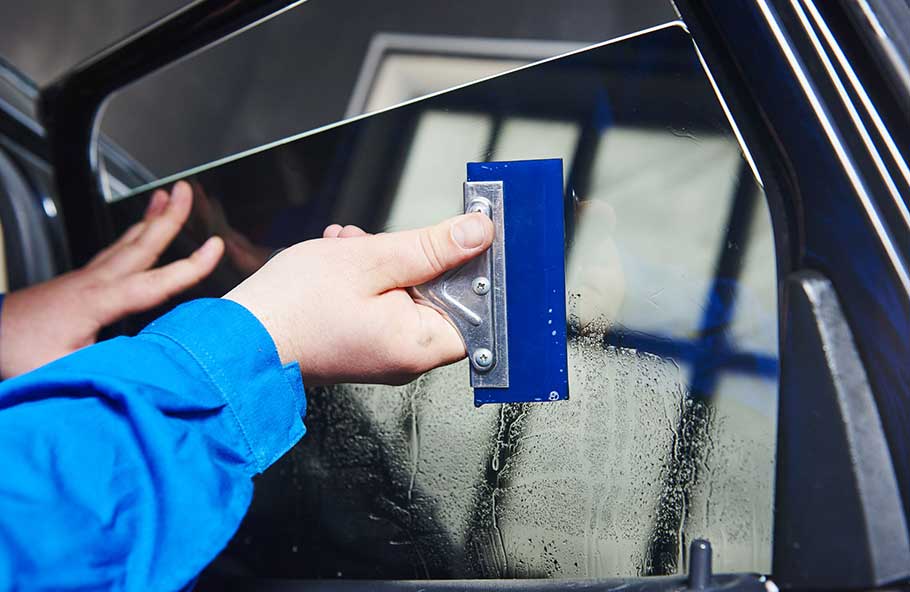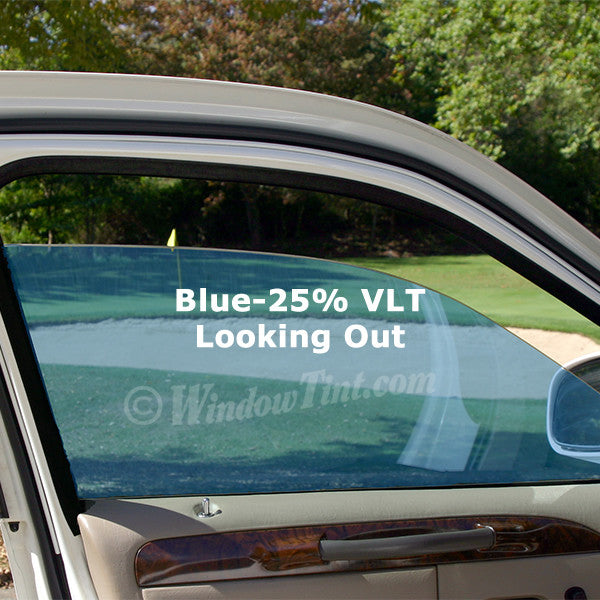Whatever You Required to Know Concerning Automobile Home Window Tinting for Your Automobile
Car window tinting is a sensible improvement for lots of automobile owners. It uses benefits such as raised convenience and energy performance. Different tint films deal with various needs and choices. Nevertheless, understanding legal regulations and picking the best color percentage is essential. The setup procedure and correct maintenance additionally play significant roles in making sure the durability of the tint. What various other factors should one consider before making a decision on window tinting?
Advantages of Car Home Window Tinting
Some automobile owners might ignore it, vehicle home window tinting offers many benefits that boost both the driving experience and the car's durability. Among the key benefits is the decrease of heat accumulation inside the lorry, enabling a more comfortable experience, specifically throughout heat. This can cause lowered dependence on cooling, boosting gas efficiency.Additionally, home window tinting gives defense versus hazardous UV rays, which can cause skin damage and fade indoor products gradually. By obstructing these rays, the tint assists protect the car's interior and preserve its resale value.Moreover, tinted windows can boost personal privacy and protection, as they make it a lot more hard for outsiders to see inside the car. This included layer of security can discourage potential burglary. On the whole, auto window tinting works as a functional investment that adds to both comfort and the lorry's general health.
Sorts Of Home Window Tint Films
When thinking about auto home window tinting, lorry proprietors experience a selection of window tint movies, each developed to meet particular needs and choices. The first group is colored window film, which supplies a fundamental level of personal privacy and UV protection while being cost-efficient. Next, metalized films incorporate little metallic fragments, showing warm and enhancing longevity, although they might conflict with electronic signals.Ceramic films are one more alternative, understood for their superior warm rejection and clearness, providing high efficiency without signal interference. Ultimately, hybrid movies incorporate qualities of colored and metalized movies, striking a balance between cost and functionality. Each kind of window tint film offers distinct advantages, permitting vehicle owners to pick based on their certain needs, such as warmth budget, control, and look factors to consider. Recognizing these choices is vital for making an educated choice regarding car home window tinting.
Comprehending Lawful Rules
When considering car home window tinting, it is important to comprehend the lawful laws that govern tint darkness restrictions and windshield tint demands. These laws can differ substantially from state to state, influencing what is allowable for automobile owners. Familiarizing oneself with these regulations assurances compliance and helps avoid potential fines or fines.
Color Darkness Limits
Exactly how can car proprietors ensure they continue to be compliant with regional laws concerning window tinting? Understanding color darkness limits is vital. Each state has particular policies that dictate the acceptable levels of darkness for window colors, which are determined by Visible Light Transmission (VLT) percentages. Generally, front-side home windows must enable a higher percent of light compared to back windows. Some states may enable just 30% VLT for front windows, while the rear home windows may be allowed to have significantly darker colors. To ensure compliance, vehicle proprietors should get in touch with state guidelines or neighborhood law enforcement for accurate details. In addition, accredited tinting specialists can provide insights concerning legal limitations, guaranteeing that vehicle proprietors make educated decisions.
Windshield Tint Rules

State-Specific Regulations
Steering through the landscape of state-specific regulations pertaining to automobile window tinting requires cautious attention to information, as guidelines can differ greatly from one state to an additional. Each state has its very own set of regulations regulating allowable color percentages, kinds of materials, and positioning on vehicle windows. For example, some states permit darker colors on rear home windows while banning them on front home windows, while others have stricter total limitations. Additionally, particular states mandate using particular materials or call for qualification from installers. Failing to adhere to these policies can result in penalties or the necessity to remove non-compliant color. Vehicle proprietors should consult their state's Department of Electric motor Automobiles or relevant authority to ensure adherence to local laws.
Picking the Right Tint Percentage
When picking the ideal color percent for a lorry's home windows, one need to take into consideration different elements that impact both appearances and performance. Color portions usually vary from 5% to 70%, with lower percents supplying darker tones and greater portions permitting extra light in. A darker color can boost personal privacy and decrease glow, while a lighter color can preserve exposure and abide by legal restrictions.Furthermore, personal choice plays a substantial duty in this choice. Some people may choose the sleek look of darker colors, while others might favor a more open, ventilated feel. Furthermore, the vehicle's purpose need to be taken into consideration; for circumstances, those utilizing their automobiles for industrial purposes could go with lighter tints to maintain a specialist look.Ultimately, the right color portion balances individual design, comfort, and adherence to local laws, guaranteeing a satisfying tinting experience.
The Installment Process
An effective setup of home window tint needs mindful attention to detail and the right tools. The process normally begins with comprehensive cleaning of the home windows to get rid of dirt, dust, and debris, ensuring correct attachment of the movie. As soon as the surface areas are prepared, the installer procedures and reduces the color film to fit each home window accurately.Next, the film is positioned on the glass, frequently utilizing a service to promote easy change and protect against air bubbles. Warm is occasionally applied to the movie to adhere it to the window's contours, improving its appearance and longevity. After confirming a seamless fit, the installer carefully cuts any type of excess film along the edges.Finally, the installer checks for imperfections and verifies all sides are safe and secure. This meticulous approach is important not only for aesthetics yet additionally for accomplishing the preferred performance benefits of home window tinting, such as UV security and heat reduction.
Upkeep and Look After Tinted Windows
Appropriate maintenance and treatment are crucial for protecting the stability of tinted home windows. Efficient cleaning strategies, the avoidance of hazardous chemicals, and regular examinations for damages play crucial duties in making sure longevity. By adhering to these guidelines, vehicle proprietors can maintain the visual and functional advantages of their window color.
Cleaning Up Techniques for Tint
Keeping the clearness and durability of tinted home windows requires details cleansing methods customized to the movie's fragile surface area. It is important to utilize a soft microfiber towel to stay clear of damaging the color while cleansing. A mild remedy of water and a few declines of moderate recipe soap can efficiently get rid of dust and grime. It is suggested to apply the cleansing service to the towel, as opposed to directly onto the colored surface area, to stop wetness from permeating into the sides of the movie. Gentle, circular movements need to be employed to clean the windows extensively. Regular cleansing aids maintain exposure and stops build-up, guaranteeing that the color continues to be in prime condition with time. Following these techniques will prolong the life of colored home windows.
Staying Clear Of Damaging Chemicals
Although many home cleaning products my link work on different surface areas, they can position considerable dangers to colored home windows. Chemicals such as ammonia, bleach, and certain solvents can weaken the color movie, bring about staining and peeling. People ought to choose pH-balanced cleaners specifically designed for colored windows. Additionally, using soft microfiber towels will certainly assist avoid scrapes and keep the tint's honesty. Normal upkeep is important; consequently, staying clear of rough scrubbing or abrasive products is crucial. It is advisable to review product labels carefully to validate compatibility with window colors. By choosing the right cleansing remedies and devices, car proprietors can protect the appearance and performance of their tinted home windows, guaranteeing a longer lifespan and peak efficiency.
Evaluating for Damages
Normal evaluations of tinted home windows are necessary for recognizing any indicators of damage that may compromise their effectiveness and appearance. Owners should seek gurgling, peeling, or staining, as these problems can show poor setup or direct exposure to dangerous elements. It is recommended to check the sides of the movie where peeling off may start and evaluate for any type of scratches that might affect presence. In addition, ultraviolet (UV) rays can trigger the color to degrade with time, so checking its efficiency in blocking UV light is essential. If any damage is found, punctual activity should be taken, which may include specialist repair or replacement. Maintaining tinted windows not only enhances visual appeals however likewise warranties proceeded security for both passengers and the automobile inside.
Typical Misconceptions About Home Window Tinting
What mistaken beliefs border window tinting for automobiles? Lots of individuals believe that all window colors are prohibited, yet laws differ by state, enabling certain degrees of tinting. Another common misconception is that darker colors obstruct even more warmth; nonetheless, the performance of window movies depends upon their innovation as opposed to darkness. Some individuals likewise believe that window tinting is solely for appearances, forgeting its benefits, such as UV defense and glow decrease. In addition, several presume that window tinting will certainly damage their automobile's glass, however skillfully used tints can in fact enhance glass sturdiness. There is an idea that home window colors block exposure, yet top quality films are developed to maintain clear sightlines while offering privacy. Understanding these misconceptions aids customers make informed choices regarding home window tinting, guaranteeing they enjoy the complete array of benefits it uses.
Frequently Asked Concerns
For How Long Does Home Window Tinting Usually Last?
The long life of window tinting differs based upon elements such as setup high quality, movie kind, and environmental conditions. Typically, high-quality tint can last anywhere from five to ten years prior to requiring substitute or reapplication.
Can I Eliminate Window Tint Myself?
Removing home window color oneself is possible, though it may be tough. Individuals should utilize a warmth source and glue eliminator to alleviate the procedure, yet caution is recommended to avoid harming the automobile's glass or interior.
What Tools Are Required for Do It Yourself Home Window Tinting?

Will Home Window Tinting Damages My Cars and truck's Glass?
Window tinting, when applied appropriately, normally does try this site not harm a cars and truck's glass. Nonetheless, improper installment or low-grade films might cause peeling, gurgling, or scraping, potentially jeopardizing the integrity of the glass gradually.
Can Tinted Windows Impact My Lorry's Resale Worth?
The effect of colored windows on an automobile's resale worth can vary. While some customers appreciate the included privacy and UV defense, others might see it as a prospective problem, potentially impacting resale favorably or negatively. When considering vehicle window tinting, lorry owners come across a variety of window color films, each created to meet certain demands and preferences. When considering automobile home window tinting, it is vital to understand the legal guidelines that govern color darkness limits and windshield color needs. Normally, front-side home windows should enable a greater percent of light compared to rear windows. Some states might permit only 30% VLT for front windows, while the back home windows might be allowed to have significantly darker colors. Some states permit darker colors on back home windows while prohibiting them on front windows, while others have stricter general limitations.